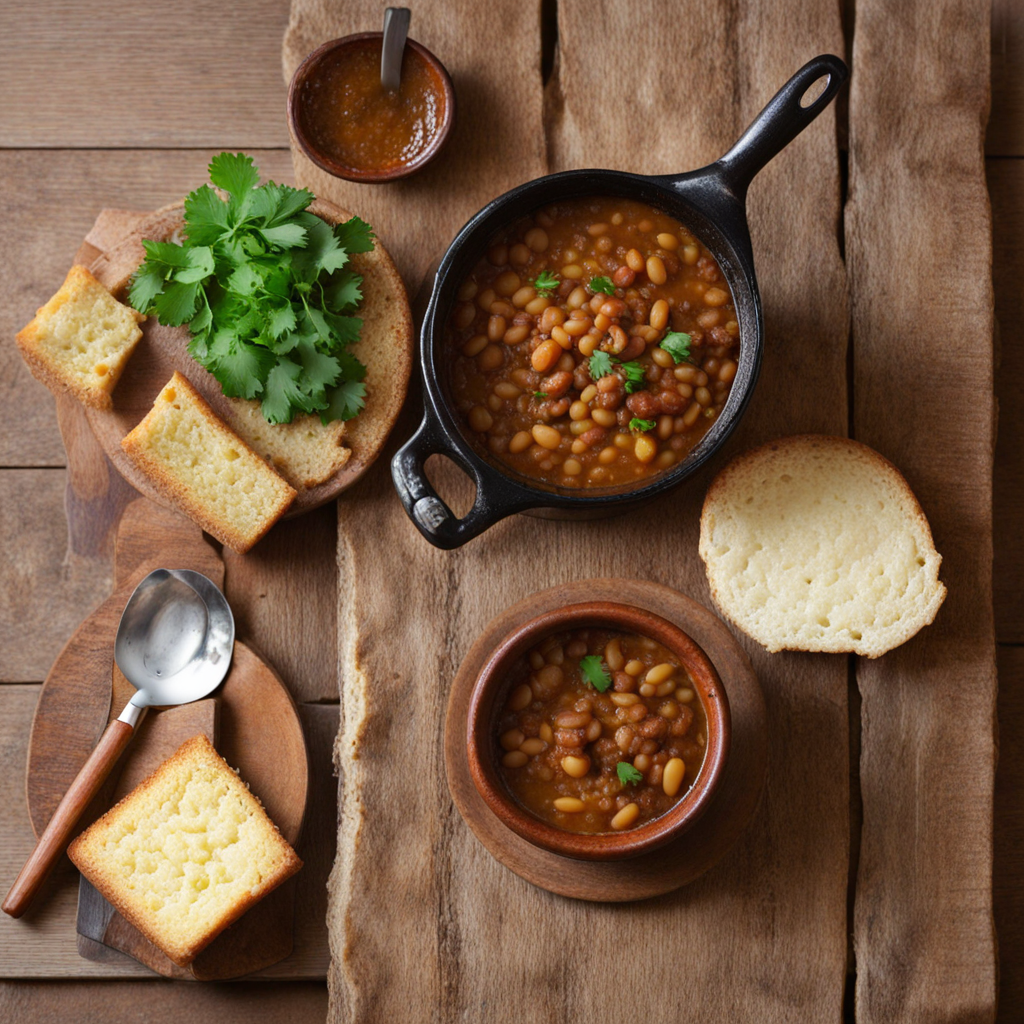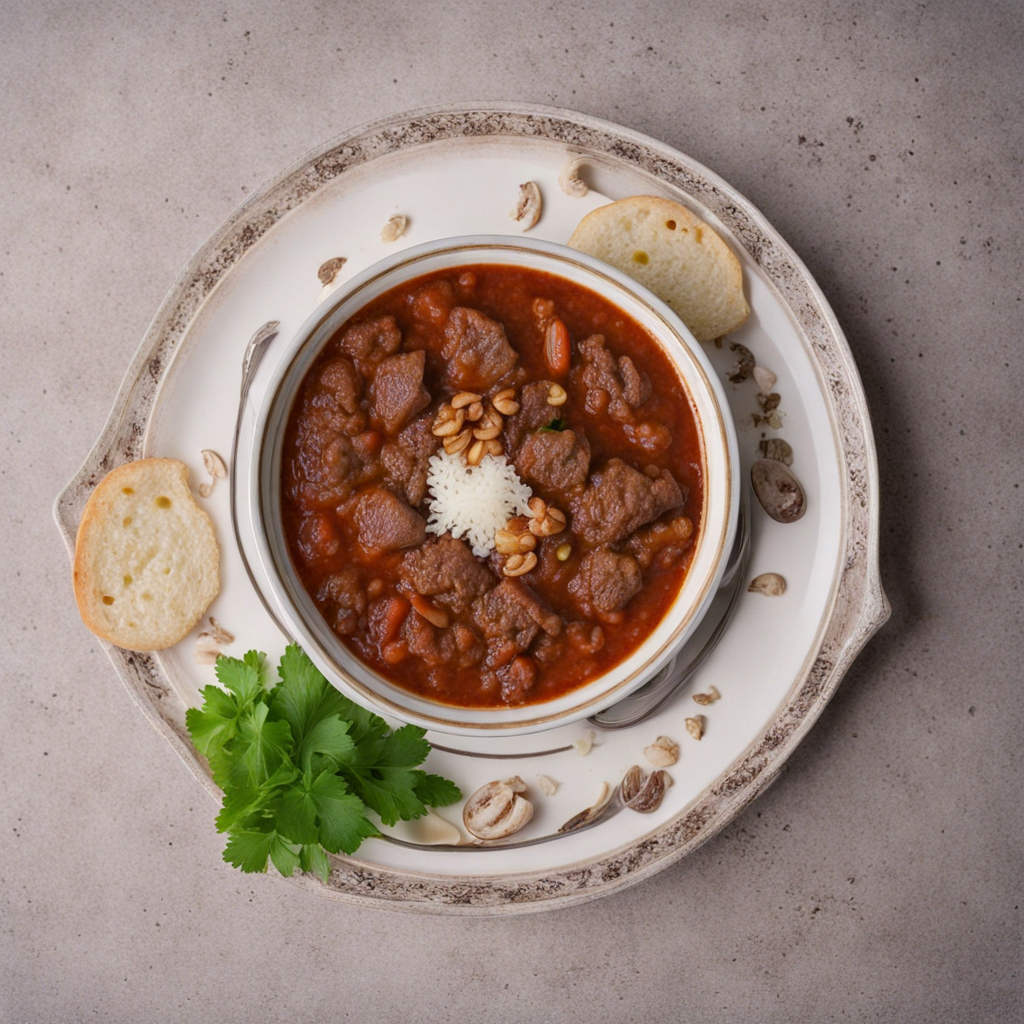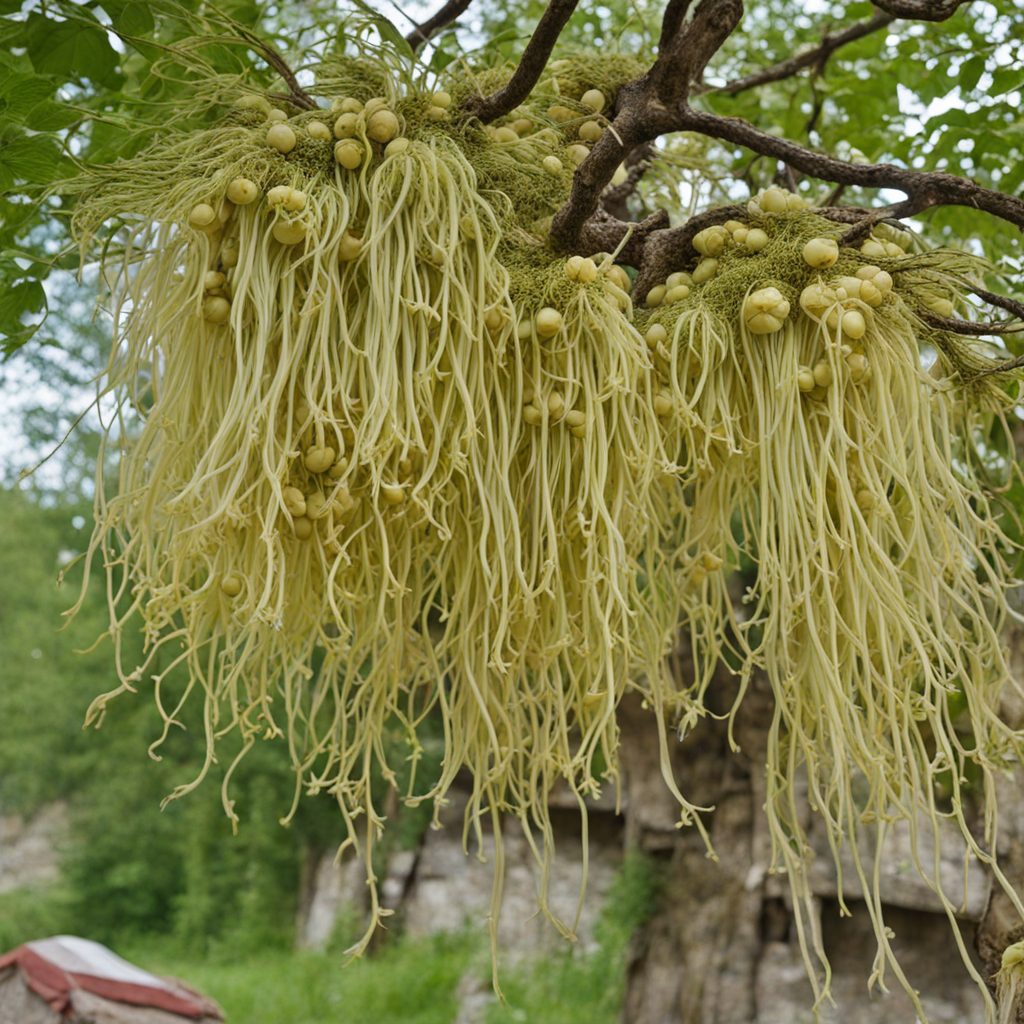Lobio
Lobio is a traditional Georgian dish that beautifully showcases the region's rich culinary heritage through its simple yet bold flavors. At its core, Lobio is a hearty bean stew, typically made with red kidney beans or pinto beans, simmered with an array of aromatic spices and herbs. The dish often includes ingredients like onions, garlic, coriander, and sometimes even walnuts, which add depth and texture. The combination of these ingredients results in a comforting and satisfying dish that reflects the warmth of Georgian hospitality. What sets Lobio apart is its unique blend of spices, which often incorporates sulguni cheese, a staple in Georgian cooking, and a variety of fresh herbs such as parsley and dill. The beans are slow-cooked until they are tender and infused with the flavors of the spices, creating a creamy, rich texture that is both nourishing and delicious. Depending on the region, Lobio may be served with a drizzle of olive oil or topped with a sprinkle of fresh herbs, enhancing its vibrant colors and flavors. Lobio is not just a dish; it's a celebration of community and tradition. Often enjoyed with cornbread or Georgian flatbread, it serves as a perfect accompaniment for family gatherings and festive occasions. The dish can be served hot or at room temperature, making it versatile for any meal. Each bite of Lobio transports you to the heart of Georgia, offering a taste of the country's agricultural bounty and culinary artistry, making it a must-try for anyone eager to explore new flavors.
How It Became This Dish
An Engaging History of 'ლობიო': The Soulful Stew of Georgia When one thinks of Georgian cuisine, a colorful tapestry of flavors, aromas, and textures comes to mind, representing the country's rich cultural heritage and agricultural bounty. Among these culinary treasures is lobio (ლობიო), a hearty bean stew that has been a staple of Georgian kitchens for centuries. Its history is not just a tale of ingredients and cooking techniques; it is a story that weaves together the threads of tradition, community, and the land itself. Origins of Lobio The origins of lobio can be traced back to the ancient agricultural practices of the Georgian people. Beans have been cultivated in the Caucasus region for thousands of years, and archaeological evidence suggests that legumes were among the first crops domesticated in this area. The word "lobio" itself derives from the Georgian word for beans, which reflects the dish's foundational ingredient. Georgians traditionally used various types of beans, including red kidney beans, white beans, and black-eyed peas, depending on regional availability and personal preference. The diversity of beans mirrors the country's varied geography, from the fertile lowlands of Samegrelo to the mountainous regions of Svaneti, each contributing unique flavors and textures to the dish. Cultural Significance Lobio is more than just a dish; it is a symbol of Georgian hospitality and communal life. It is often served during family gatherings, holidays, and celebrations, embodying the spirit of sharing that is central to Georgian culture. The act of preparing and enjoying lobio brings families and friends together, fostering bonds over the shared experience of cooking and eating. In addition to its role in social gatherings, lobio carries cultural significance linked to Georgian identity. The dish is often associated with the country's agrarian lifestyle, reflecting a deep connection to the land and its produce. Beans are a source of sustenance and nourishment, and they have historically been a vital food source for the Georgian peasantry, especially during lean seasons. As such, lobio represents resilience, resourcefulness, and the ability to thrive in a challenging environment. Ingredients and Preparation The beauty of lobio lies in its simplicity and versatility. At its core, the dish consists of beans, herbs, and spices, often flavored with ingredients such as onions, garlic, coriander, and walnuts. The preparation of lobio can vary from region to region, with each locality adding its unique twist to the recipe. Traditionally, cooking lobio involves soaking the beans overnight and then simmering them until tender. The beans are then combined with sautéed onions and garlic, fresh herbs like coriander and dill, and often a touch of red pepper for heat. Some variations incorporate roasted nuts, particularly walnuts, which add a rich texture and nutty flavor. The dish is typically finished with a drizzle of olive oil and served hot, sometimes accompanied by cornbread or traditional Georgian bread, shoti. Development Over Time As Georgia has navigated the tides of history—from ancient kingdoms and invasions to Soviet rule and independence—the preparation and significance of lobio have evolved. During the Soviet era, traditional Georgian foods faced a degree of homogenization, with many recipes adapted to suit the tastes of a broader audience. However, lobio remained a beloved dish, often featured at Soviet-era banquets, showcasing the country's culinary heritage to the wider Soviet populace. With Georgia's independence in the early 1990s, there was a resurgence of interest in traditional cuisine, including lobio. This renaissance allowed chefs and home cooks alike to explore the depths of Georgian culinary traditions, leading to a revival of ancient recipes and techniques. Food festivals celebrating Georgian cuisine, including lobio, have gained popularity, both domestically and internationally, showcasing the dish’s cultural importance and inviting a new generation to appreciate its flavors. Lobio in Modern Times Today, lobio is enjoyed not only in homes across Georgia but also in restaurants that celebrate the country's rich culinary heritage. Chefs experiment with variations of the dish, incorporating seasonal ingredients or contemporary cooking techniques while still honoring tradition. Many Georgians now share their family recipes, passing down the knowledge and love of cooking lobio to their children, ensuring that this beloved dish continues to thrive. Moreover, the rise of the global interest in plant-based diets has brought renewed attention to lobio as a nutritious and flavorful option. As more people seek out vegetarian and vegan dishes, lobio stands out for its wholesome ingredients and satisfying nature. Its adaptability allows for endless variations, accommodating dietary preferences while remaining true to its roots. Lobio and the Global Palate In recent years, the growing popularity of Georgian cuisine has led to a surge in interest in lobio beyond the borders of Georgia. Food enthusiasts and chefs around the world have begun to embrace the dish, incorporating it into diverse culinary contexts. Lobio has found its way onto the menus of fusion restaurants, where it is paired with international flavors and ingredients, showcasing its versatility and appeal. Social media platforms have also played a pivotal role in the resurgence of interest in lobio. Home cooks and food bloggers share their own interpretations of the dish, along with stories of its significance in their families. This digital sharing fosters a sense of community among those who appreciate Georgian cuisine, creating a global network of lobio lovers. Conclusion Lobio, the soulful stew of Georgia, encapsulates the essence of the nation's culinary heritage. With its deep-rooted history, cultural significance, and adaptability, lobio is more than just a dish; it is a testament to the resilience and creativity of the Georgian people. As it continues to evolve, both in Georgia and beyond, lobio remains a cherished symbol of hospitality, community, and the enduring connection to the land. Whether served at a festive gathering or enjoyed as a comforting meal at home, lobio invites all to partake in the rich tapestry of Georgian culture, one bowl at a time.
You may like
Discover local flavors from Georgia







